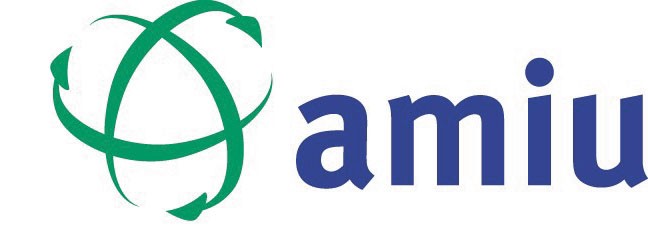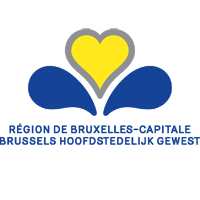News
More circularity, less carbon | Cohort 1
COHORT 1
The cross analysis of the carbon footprint of waste of the Cohort 1 is now available. Discover the similarities and differences of the three territories here.
Launched in February 2020, this cohort gathers the regions Pays de la Loire, Brussels-Capital, and the municipality of Genoa. These pilot territories have finished to collect data and are now in the phase of analysing them. This first experience highlighted several challenges such as a lack of data on the composition of mixed fractions or on the outcomes of the different fractions. It has been also challenging to collect relevant data on local or regional consumption patterns.
Reports and documents
- Cross Analysis of the First Cohort
- Carbon Footprint of Waste of Pays de la Loire
- Carbon Footprint of Waste of Genoa
- Carbon Footprint of Waste of Brussels
Analysis
Cross Analysis
{slider Waste carbon impacts}Due to local specificities and a different scope of municipal waste data, the three territories present some discrepancies not only for waste generation and composition but also in the organisation of waste treatment which leads to different carbon footprints.
Nonetheless, the carbon footprints still present similar trends. Genoa, Pays de la Loire and Brussels all boast a positive or neutral impact thanks to their efforts regarding end-of-life and recycling. Unfortunately, these savings of carbon emissions are limited compared to the total footprint since most impacts are linked with the production and consumption of products.
{slider The way forward}
Recycling performances of the three territories are satisfactory; nonetheless it is possible to improve them, in particular to achieve a significant reduction of carbon emissions. The question is which waste fraction should then be tackled, and how? The most carbon-intensive fractions are actually similar for the three territories: textile, food, and plastic. For some fractions, recycling has a limited potential impact to reduce the total footprint of the whole life cycle. The main potential for improvement rather lies in prevention and re-use measures as well as actions tackling production and consumption than in measures only tackling the end-of-life of products or focusing on diversion from landfills. To make circular economy more effective in tackling climate change, clear and ambitious prevention and re-use targets will be necessary. For instance, the territories involved in the first cohort will have to reduce their municipal waste generation by 20% to reach the -25% target set by the More Circularity, Less Carbon campaign, or decide to only focus on priority fractions and set for these even more ambitious reduction targets.
Although the paucity of local data prevents from better analysing how local specificities can play a role, the cross analysis leads to the assumption that differences in food diets, consumption patterns or recycling methods are likely to have a significant impact on the carbon footprint. These aspects will have to be explored within the next cohorts.
{/sliders}
Want to know more? Read the Cross Analysis of the First Cohort.
Pays de la Loire
{slider Context}
![]() Pays de la Loire is one of the 13 metropolitan French regions, located in the western part of the country. It encompasses about 3.76 million inhabitants, in 1,238 communes, and has a density of 117 in./km². The Region approved a new waste strategy in 2019, which included a state-of-the-art of the waste situation based on the year 2015. About 2.2 million tonnes of municipal waste was collected, representing around 585kg/inhabitant, about half of it via door-to-door and bring bank schemes, and the other half in civic amenity sites or specific collection schemes.
Pays de la Loire is one of the 13 metropolitan French regions, located in the western part of the country. It encompasses about 3.76 million inhabitants, in 1,238 communes, and has a density of 117 in./km². The Region approved a new waste strategy in 2019, which included a state-of-the-art of the waste situation based on the year 2015. About 2.2 million tonnes of municipal waste was collected, representing around 585kg/inhabitant, about half of it via door-to-door and bring bank schemes, and the other half in civic amenity sites or specific collection schemes.
ACR+ member involved: Region Pays de la Loire
{slider Carbon impacts}
The carbon impacts of municipal waste in Pays de la Loire in 2015 were 4 million tonnes of carbon dioxide equivalent (Mt CO2eq.), or 1.1 tonnes CO2eq./capita. The analysis shows that carbon saved through recycling was higher than carbon impacts of waste disposal (landfilling and incineration), meaning waste management activities (i.e., collection, treatment, and disposal) in Pays de la Loire is carbon negative. Embodied carbon impacts of waste material are deemed to be the highest contributor to the net carbon impacts of waste generated in Pays de la Loire which results in a waste carbon intensity of 2.28 tCO2eq./tonne of waste. This observation confirms the importance of waste prevention and moving up the waste hierarchy to prevent materials from being classified as waste in the first place.
Many of the high tonnage materials in Pays de la Loire’s waste stream have relatively low carbon impacts. The waste category with the single greatest carbon impact is textile waste, which accounted for 5% of waste by weight but 32% of waste carbon impacts. Other carbon-intensive materials identified are plastic wastes, food wastes, and paper & cardboard wastes. Thus, to achieve the 2025 carbon savings target, focus should be placed on the most carbon intensive waste materials, such as food waste and textiles.
{slider The way forward}
Pays de la Loire must reduce its waste carbon impacts by approximately 1 MtCO2eq., to a total 3 MtCO2e by 2025, in order to achieve the 25% ACR+ target.
Due to its high recycling rate, the carbon impacts of waste management in Pays de la Loire are already low, offering limited additional carbon savings opportunities linked with recycling. However, the impact of the production and consumption of the products that became waste is very significant compared to the impact associated with waste management. The key fractions to be targeted through prevention and reuse are textile, food, and plastic. When it comes to waste management and recycling, the main potentials seem to be on plastic waste and mixed and undifferentiated waste, for which it might be interesting to improve recycling and limit incineration and landfilling.
Results suggest that Pays de la Loire can meet the 2025 carbon reduction target by adopting one of the following strategies:
- Reducing 40% of textile waste and food waste, and 20% of the other priority materials (i.e., plastics, paper and cardboard, mixed metals, and mixed and undifferentiated materials); or
- Reducing all municipal waste fractions by 20%.
{/sliders}
Want to know more? Read the full report on the Carbon Footprint of Waste of Pays de la Loire or watch again the webinar on Pays de la Loire's experience.
Genoa
{slider Context}

 Genoa is a port city and the capital of northwest Italy's Liguria region with a population of 583,600 inhabitants. Household waste for the region is managed by ACR+ member AMIU Genova S.p.A.. In 2019, this amounted to 283,000 tonnes, representing 485 kg/inh.
Genoa is a port city and the capital of northwest Italy's Liguria region with a population of 583,600 inhabitants. Household waste for the region is managed by ACR+ member AMIU Genova S.p.A.. In 2019, this amounted to 283,000 tonnes, representing 485 kg/inh.
ACR+ member involved: AMIU
{slider Carbon impacts}
In 2019, the carbon impacts of the municipal waste of the city of Genoa was estimated to 708,000 tCO2eq. The analysis shows that carbon saved through recycling and other diversion was higher than carbon impacts of waste disposal (landfilling and incineration), meaning waste management activities (i.e., collection, treatment, and disposal) in Genoa are carbon negative. Embodied carbon impacts of waste material (i.e., the emissions generated by the extraction of resources, production, manufacturing, etc. of the corresponding products) are the highest contributor to the net carbon impacts of waste, which is why waste prevention, in accordance with the waste hierarchy, always offers the greatest carbon savings. Accounting for the full lifecycle impacts, Genoa’s waste carbon intensity amounts to 2.5 tCO2eq./tonne of waste.
{slider The way forward}
In the framework of the More Circularity, Less Carbon campaign, the Italian city is aiming to reduce by 25% its carbon emissions linked with local resource management by 2025 and reach a total of 530,000 tCO2eq.
While waste management activities (i.e., collection, treatment, and disposal) in Genoa are carbon negative, improving recycling has a potential to further reduce the emissions. However, priority should be given on reducing the impacts linked with the production and consumption of the products that became waste, with the greatest carbon savings offered by waste prevention. More specifically, focus should be placed on textile, one of the most carbon intensive waste materials for Genoa. In addition to prioritising textile waste for waste prevention and recycling, the analysis reveals that food, plastic, and paper & cardboard wastes have high waste tonnages and significant carbon impacts. Focusing on these categories in future policy interventions will not only reduce carbon impacts but also increase recycling rates in Genoa considerably.
The different strategies investigated for Genoa to reduce its waste carbon impacts by approximately 177,000 tCO2eq all focus on waste prevention measures. The two main possibilities are:
- Reducing 30% of textile waste and food waste, and 20% of the other priority materials (i.e., plastics, paper and cardboard, mixed metals, and household and similar waste); or
- Reducing all municipal waste fractions by 20%.
{/sliders}
Want to know more? Read the full report on the Carbon Footprint of Waste of Genoa.
Brussels-Capital Region
{slider Context}

 The Brussels-Capital Region is a region of Belgium comprising 19 municipalities, including the City of Brussels with a population of 1.2 million inhabitants. In 2018, this amounted to 330,414 tonnes, representing 275 kg/inh.
The Brussels-Capital Region is a region of Belgium comprising 19 municipalities, including the City of Brussels with a population of 1.2 million inhabitants. In 2018, this amounted to 330,414 tonnes, representing 275 kg/inh.
ACR+ member involved: Brussels Environment
{slider Carbon impacts}
The carbon impacts of household waste in Brussels in 2018 were 620,105 tonnes of carbon dioxide equivalent (tCO2eq.), or 0.5 tCO2eq./capita. The analysis shows that carbon saved through recycling was higher than carbon impacts of waste disposal (i.e., incineration), meaning waste management activities (i.e., collection, treatment, and disposal) in Brussels is carbon negative. Embodied carbon impacts of waste material are always the highest contributor to the net carbon impacts of waste however, which is why waste prevention, in accordance with the waste hierarchy, always offers the greatest carbon savings. Accounting for the full lifecycle impacts, Brussels’ waste carbon intensity of 1.9 tCO2eq./tonne of waste. This low carbon intensity is attributed primarily to the diversion of all residual waste from landfill to incineration.
Many of the high tonnage materials in Brussels’ waste stream have relatively low carbon impacts (e.g. glass waste accounts for 9% of total waste generated, but just 1% of total carbon impacts). To achieve the 2025 carbon savings target, focus should be placed on the most carbon intensive waste materials, such as food waste and textiles.
{slider The way forward}
To reduce by 25% its carbon emissions linked with local resource management by 2025, the Region of Brussels-Capital aims to move from an estimated 620,105 tCO2eq to a total of 465,000 tCO2eq, thus reducing the waste carbon impacts by approximately 155,000 tCO2eq. This assessment is based on the waste generated by household.
Taking into consideration the full lifecycle impacts, Brussels shows a rather low carbon intensity which is attributed primarily to the diversion of all residual waste from landfill to incineration. As for the other participants of the first cohort of the campaign, the production and consumption of the products that became waste is the highest contributor to the net carbon impacts of waste whereas the greatest carbon savings could be offered by waste prevention. When looking at the most carbon intensive waste materials, food waste and textile come first. Paper & cardboard wastes have also high waste tonnages and significant carbon impacts. Prioritising these categories in future policy interventions will not only reduce carbon impacts but also increase recycling rates in Brussels considerably.
The analysis led by ACR+ and Zero Waste Scotland pinpoints two main strategies for Brussels to meet the 2025 carbon reduction target:
- Reducing 30% of textile waste and food waste, and 20% of the other priority materials (i.e., plastics, paper and cardboard, mixed metals, and household and similar materials); or
- Reducing all municipal waste fractions by 20%.
{/sliders}
Want to know more? Read the full report on the Carbon Footprint of Waste of Brussels.










